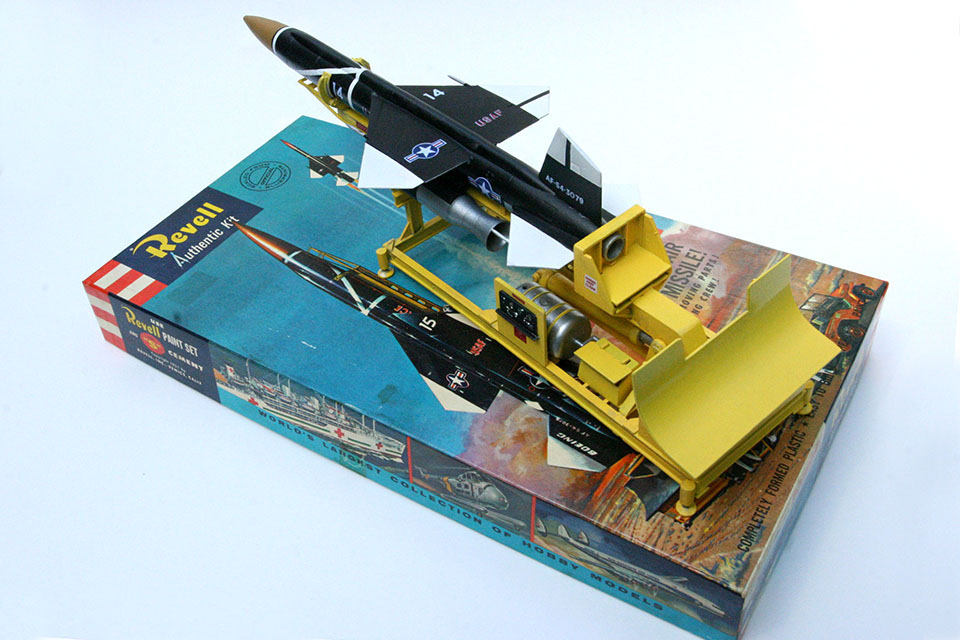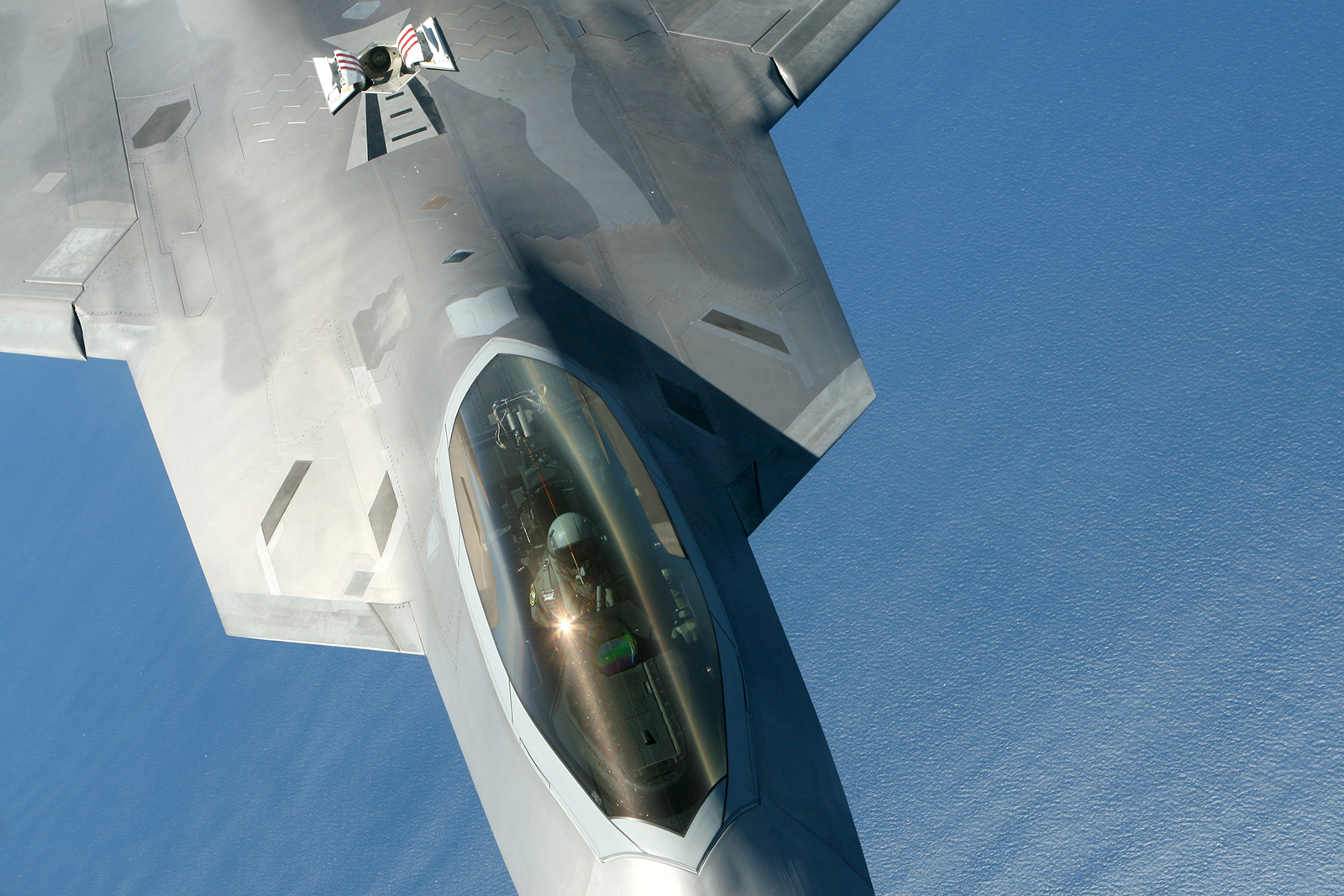Atlantis Hobbies brings back a classic Cold War kit and it’s great nostalgia.

The Bomarc surface-to-air missile was a Cold War response to the apocalyptic vision of squadrons of Soviet bombers headed toward targets in North America. A nuclear-tipped interceptor streaking toward the enemy seems the stuff of science fiction today, but in the 1950s it was an all too real strategy.
During the post World War II boom, things seemed to get … bigger. Cars got bigger, houses got bigger, even the portions at the local diner got bigger, and so did surface-to-air missiles. By the end of the war experiments with anti-aircraft missiles led to a number of concepts, technology being what it was (before the microchip) many proposals were as large as the early jet fighters of the day. Boeing’s ramjet powered MX 1599 was just one of those designs. The Air Force thought the idea was promising and, emphasizing that it was essentially a pilotless aircraft, gave it the designation F-99.
Testing lasted through 1955 and the early versions of what was now designated the IM-99A, got the nickname BOMARC (Boeing Michigan Aeronautical Research Center). The project mirrored some US Army projects, and created more than a little inter-service rivalry, but this was clearly the air force’s baby.
BOMARC was declared operational in 1959, and while the Air Force wanted to create as many as 52 sites around the country defending major US cities, only 14 were built in the US and two in Canada, our North American Air Defense Command (NORAD) partner. As defense budgets decreased cuts followed some of the maintenance issues (and an accident or two). Missile sites began to be deactivated and the last operational site at McGuire AFB, New Jersey was closed down in 1972.
BOMARC remains a fascinating story of weapons development during the height of the Cold War. This faithful replica will make a great source of conversation on a modeler’s display shelf.
The Kit
Revell released their IM-99 Bomarc kit in 1958. Fortunately for us, the classic Cold War missile is back on hobby shop shelves thanks to the Long Island company, Atlantis Hobbies. The kit comes complete with the original box art by the legendary artist Jack Leynnwood. The parts are exactly the same as they were when the kit first hit the shelves. Ah, nostalgia.

Gather up four or five grades of sandpaper and get to work. Assembly of the missile is relatively simple, since only a dozen pieces make up the actual weapon. There is some minor flash and a few ejector pin marks, typical of older kits. Rather heavy rivets and deep panel lines will need to be sanded down. The fit is ok but seams will still need some putty, more sanding and then…some more sanding. After the fuselage, wings and tail come together, it’s time for…a little more sanding. A coat of primer or a product like Mr. Surfacer will help reveal spots that need additional filling and sanding. The two ramjet engines attached to the bottom of the fuselage should be joined, sanded and primed as well. Once those heavy panel lines are gone, re-scribing some of them using those all-important research photos is a great idea.

While the missile is drying, start on the launch platform. Dry-fit and clean up the various pieces first. Once the base is complete, you might find the frame is slightly warped—it happens frequently with kits from older molds. Dipping the frame in a bath of boiling water will heat the plastic enough to aid in bending the piece, just a bit. This will help ensure all four legs are level. The gantry is next. While construction is very simple, take time to dry-fit and sand parts so they will be easier to work with.
Prime the launch pad with a coat of white, then a nice industrial yellow. A light wash of black will make some of the detail pop. To replicate the dials and gauges on the launcher, a cockpit instrument panel decal from the parts box can be cut down. Small excess ejector pin pieces form the back of the gauges. Florist’s wire works well for some of the hydraulic lines that run the length of the launch rail.

With the launch platform nearly complete, painting the missile itself is next. There are three schemes to choose from. One is an overall gray that was typical of operational missiles and Canadian markings are included for their contribution. A third scheme is more visually interesting, an overall black with white wingtips and geometric striping. Spray the white first, and following your reference photos, mask off the areas that will remain white. There are decals for the white striping, but masking the white before painting the rest of the missile gives a cleaner look. The nose should be a medium tan color. After an overall gloss coat, it’s time for markings. The decals are a bit thick; a decal setting solution will make them settle into the panel lines just fine.
Set aside the missile and turn your attention back to the launcher. The launch rail/gantry assembly snaps into the base, and it can be articulated so that you can display the missile either horizontally or vertically. A few decals, data plates and warning signs complete the base.
Parts are included for a maintenance stand that runs the length of the launcher. It’s a nice addition but we’ll add it to the next one (how could you build just one?).

Back to the missile and some final bits and pieces. Attach the two ramjets to the underside of the main fuselage. Another layer of gloss coat and the missile is ready to be attached to the launch pad. Finally this classic IM-99 Bomarc missile is ready to display. Building this kit brings back a lot of memories, but with the intervening years comes experience. Hopefully your completed missile looks a little sharper than it did the first time.
